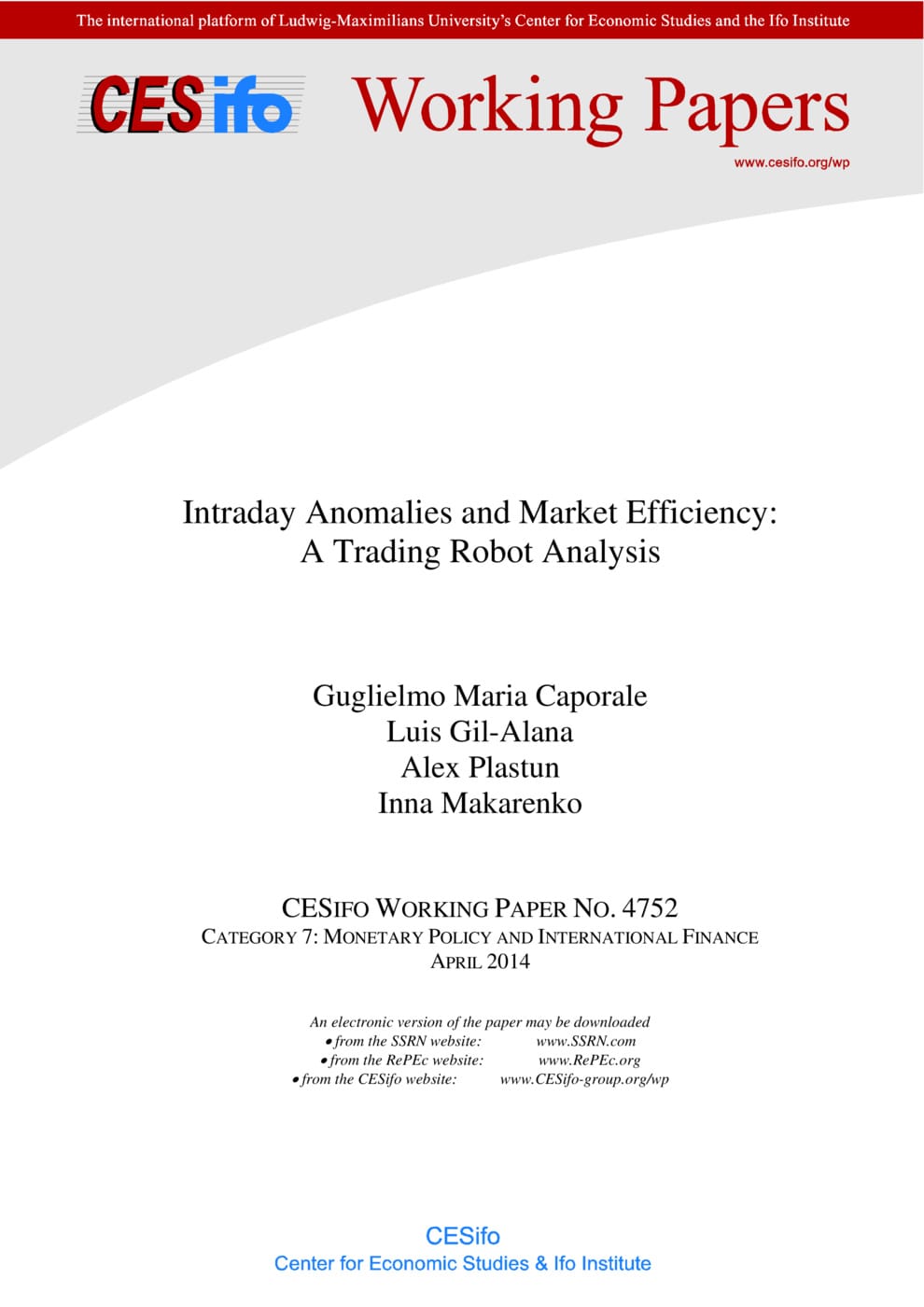Intraday Anomalies and Market Efficiency: A Trading Robot Analysis
CESifo, Munich, 2014
CESifo Working Paper No. 4752

One of the leading criticisms of the Efficient Market Hypothesis (EMH) is the presence of so-called “anomalies”, i.e. empirical evidence of abnormal behaviour of asset prices which is inconsistent with market efficiency. However, most studies do not take into account transaction costs. Their existence implies that in fact traders might not be able to make abnormal profits. This paper examines whether or not anomalies such as intraday or time of the day effects give rise to exploitable profit opportunities by replicating the actions of traders. Specifically, the analysis is based on a trading robot which simulates their behaviour, and incorporates variable transaction costs (spreads). The results suggest that trading strategies aimed at exploiting daily patterns do not generate extra profits. Further, there are no significant differences between sub-periods (2005-2006 – “normal”; 2007-2009 – “crisis”; 2010-2011 – “post-crisis).
Monetary Policy and International Finance
Empirical and Theoretical Methods